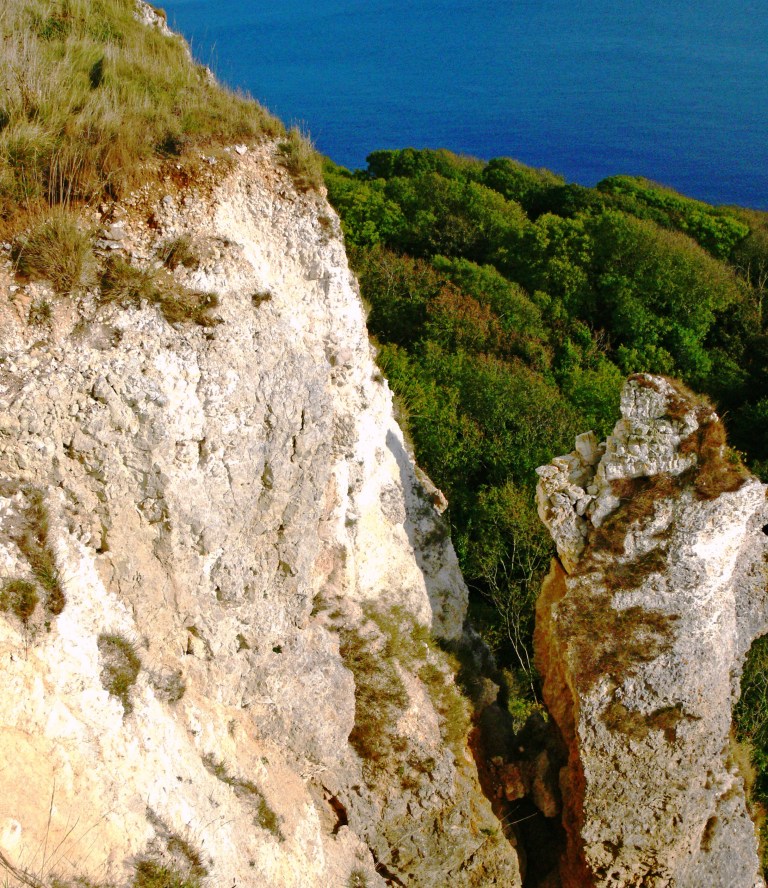C RWG
O



Southern England, the only region of the UK in which there is no recorded Quaternary glacial deposit, was subject to periglacial climates that lasted for more than 20ka on at least eight occasions during the last 750ka. There are large outcrops of Jurassic mudstones in the region, principally the Lias Group and the Oxford Clay and Kimmeridge Clay Formations.
Notwithstanding the susceptibility of this type of mudstone to permafrost damage and deformation, there are few published records of large-scale folding that has been attributed to periglacial disturbance. There are, however, numerous site-investigation records of near-surface damage to mudstones that have been attributed to permafrost activity. This example at Seatown is attributed to intermittent downhill creep of surface layers up to 20 m thick when in a partially frozen condition. The style of folding in the mudstones and the geometry of the disturbed deposits indicates that they are not tectonic in origin, nor were they formed by valley bulging or landsliding.
An important aspect of site investigation is the assessment of the risks that can arise from natural processes. Those attributable to landslides can be grouped into two broad categories, those that might pose a risk to the public and those that might damage property or structures. Qualitative methods of determining the risk from landslides mostly combine an assessment of the areal extent and depth of the possible landslide with the frequency with which the area is visited and/or its proximity to a built-up area. Semi-quantitative assessments of risk tend to be based on the theoretical concepts, for example how long a person would need to stand under a cliff before they were hit by falling debris. Such comparisons depend on a knowledge of the frequency of landslides at that locality and the amount of time that people spend in the potential danger zone. In the case of Bindon Cliffs the potential risk is related to the frequency with which the SW Coastal Path (which lies below the cliffs) is traversed by walkers and an assessment of how much debris might be generated by a failure and how far downslope it would travel. There is to date no published account in Britain of how the risk assessment for a particular landslide-prone area compares with the landslide-related accident figures for that area.
As part of a study of the geological succession and structure of the onshore and nearshore areas at and adjacent to Lyme Regis, seismic-reflection traverses were made along 22 sub-parallel, roughly E-W tracks at high tide. The two-way-travel times were not converted to depths because the thicknesses between the principal marker bands were already accurately known from nearby cliff measurements and onshore cored boreholes. The closely spaced limestones in the Blue Lias Formation produced strong reflections that give the formation a distinctively 'well-bedded' seismic signature, and the junction with the overlying Shales-with-Beef Member is particularly clear in all the sections. The seismic-reflection survey was especially useful for identifying folding and faulting in the Lias. These structures had proved to be particularly difficult to recognise in the intertidal area where the more fractured rocks are either sand covered or represented by debris-filled gullies.